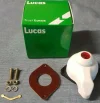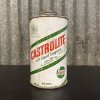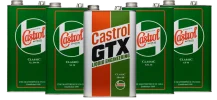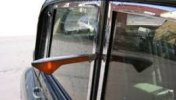I was having a chat the other day about driving in days gone by. When I took my test, I had to do hand signals. I recall that in the Highway Code there were also illustrations of hand signals for people driving a horse and carriage, showing how you would signal your intentions with the whip.
There were also hand signals you were supposed to give to a police officer.
Our family’s first car was an Austin A35 van. One of the selling points was that it had indicators and not trafficators. It had that big switch in the middle of the dashboard that you had to switch on and off, no automatic cancellation back then.
There were rules about parking at night, too. At one stage, cars had to have parking lights — white at the front and red at the back — for some roads.
I had a Ford Cortina that had a built-in parking light in the indicators. The trouble was, if left on, it would drain your battery.
Cars would often boil over, so a gallon of water was always in my car to top it up — as were some tools.
An oil change was needed every 1,500 miles, along with new plugs and points.
My first car was a Mk I Ford Escort. I found out after a week that it was completely clapped out, needing a rebore.
Fortunately, there was the trusty Haynes Manual, one for each make of car. It gave step-by-step instructions on how to overhaul the engine.
I took mine out on the road, much to the annoyance of the neighbours, and stripped it down. I then sent all the parts off to an engineering workshop; I think it was Ashfield Engineering in Erdington, who did a sterling job of reboring and crank regrinding, etc.
The little Escort served me well for many years, but it was hard to keep on top of the corrosion.
What are your memories of the joys of motoring?
There were also hand signals you were supposed to give to a police officer.
Our family’s first car was an Austin A35 van. One of the selling points was that it had indicators and not trafficators. It had that big switch in the middle of the dashboard that you had to switch on and off, no automatic cancellation back then.
There were rules about parking at night, too. At one stage, cars had to have parking lights — white at the front and red at the back — for some roads.
I had a Ford Cortina that had a built-in parking light in the indicators. The trouble was, if left on, it would drain your battery.
Cars would often boil over, so a gallon of water was always in my car to top it up — as were some tools.
An oil change was needed every 1,500 miles, along with new plugs and points.
My first car was a Mk I Ford Escort. I found out after a week that it was completely clapped out, needing a rebore.
Fortunately, there was the trusty Haynes Manual, one for each make of car. It gave step-by-step instructions on how to overhaul the engine.
I took mine out on the road, much to the annoyance of the neighbours, and stripped it down. I then sent all the parts off to an engineering workshop; I think it was Ashfield Engineering in Erdington, who did a sterling job of reboring and crank regrinding, etc.
The little Escort served me well for many years, but it was hard to keep on top of the corrosion.
What are your memories of the joys of motoring?




